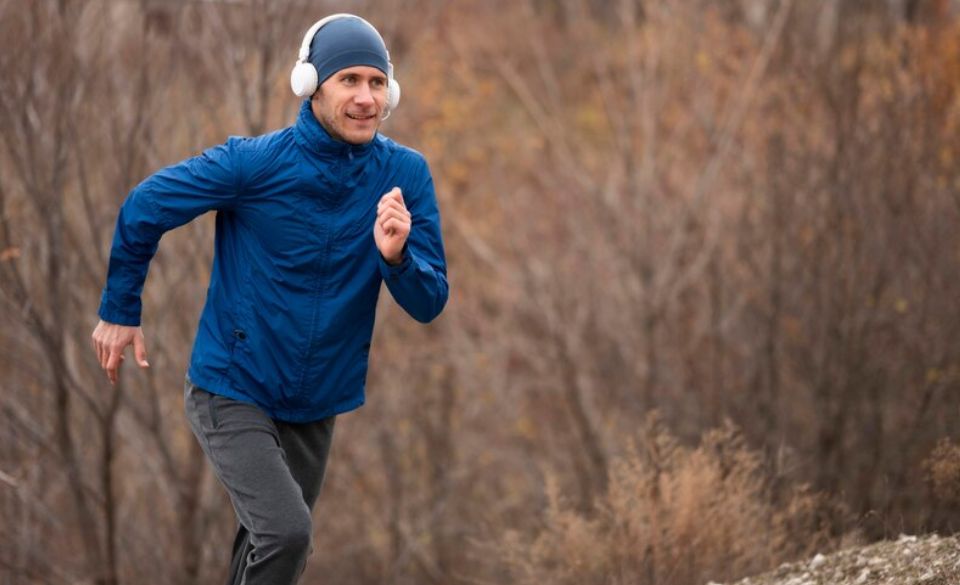
Best Knee Exercises For Runners
Page Contents
These exercises are designed to strengthen the muscles around the knee, providing valuable support for runners and helping prevent knee pain. Whether incorporated into a warm-up routine before a run or as part of a cool-down afterward, these exercises target various muscle groups to enhance overall knee stability.
Typically, incorporating these knee-strengthening exercises into your daily routine can yield noticeable benefits within a span of two weeks. It is essential to ensure that the exercises are performed without any pain. If discomfort arises, it is advisable to stop immediately and seek medical advice, particularly for individuals with pre-existing knee injuries.
Why are strong knees important?
Strong knees are crucial for several reasons:
1. Joint Stability:
Strong knee muscles provide stability to the joint, reducing the risk of injuries and supporting proper alignment during movement.
2. Injury Prevention:
Well-conditioned knee muscles help prevent common injuries, such as ligament strains, tears, and overuse injuries, by absorbing and distributing impact forces more effectively.
3. Functional Movement:
Knee strength contributes to better functional movement, aiding in activities like walking, running, and climbing stairs with reduced strain on the joint.
4. Joint Support:
Strengthening the muscles around the knee provides additional support to the joint, especially during weight-bearing activities, minimizing the risk of wear and tear.
5. Enhanced Performance:
For athletes and active individuals, strong knees are essential for optimal performance in sports and physical activities, enabling better endurance and agility.
6. Arthritis Management:
Maintaining knee strength is crucial for managing conditions like osteoarthritis, as strong muscles can help stabilize the joint and alleviate symptoms.
What strengthening is important for runner’s knee?
Runner’s knee, or patellofemoral pain syndrome, often requires targeted strengthening exercises:
1. Quadriceps Strengthening:
Focusing on the quadriceps helps stabilize the kneecap and improve its tracking within the femoral groove.
2. Hamstring Strengthening:
Strengthening the hamstrings contributes to overall knee stability and helps balance the forces acting on the knee joint.
3. Hip Muscles Activation:
Strengthening the hip abductors and external rotators helps in better hip and knee alignment, reducing stress on the patellofemoral joint.
4. Core Strengthening:
A strong core supports overall body mechanics, aiding in maintaining proper posture and alignment during running.
5. Balanced Muscle Development:
Ensuring a balanced development of muscles around the knee, including the adductors and abductors, helps prevent imbalances that can contribute to runner’s knee.
Do runners have strong knees?
While runners often have well-conditioned lower extremities, including the knees, it’s not a universal guarantee:
1. Muscle Imbalances:
Runners may develop muscle imbalances due to repetitive motion, emphasizing certain muscle groups over others. Addressing these imbalances through cross-training and targeted strength exercises is crucial.
2. Overuse Injuries:
Runners can be prone to overuse injuries, including those affecting the knees, if training volume or intensity increases too rapidly without adequate recovery or strength training.
3. Importance of Strength Training:
Incorporating strength training specific to the needs of runners is essential to ensure comprehensive muscle development and reduce the risk of knee-related issues.
4. Individual Variations:
The strength of a runner’s knees can vary widely based on factors like training history, genetics, and adherence to a well-rounded fitness regimen.
What is the role of the knee in running?
The knee plays a crucial role in the biomechanics of running:
1. Shock Absorption:
The knee absorbs and distributes impact forces generated during each footstrike, minimizing the stress on other joints, such as the ankles and hips.
2. Joint Flexion and Extension:
The knee undergoes repetitive flexion and extension during the running gait, propelling the body forward and providing the necessary range of motion.
3. Stabilization:
Knee stability is vital for maintaining proper alignment, especially during the single-leg support phase of running. Strong knee muscles contribute to joint stability.
4. Coordination with Hip and Ankle:
The knee works in coordination with the hip and ankle joints to ensure a smooth and efficient running gait. Imbalances in any of these joints can impact overall running mechanics.
5. Force Transmission:
Forces generated by the muscles in the thighs and calves are transmitted through the knee joint, contributing to forward propulsion during running.
The knee’s role in running involves absorbing impact, facilitating joint movement, providing stability, and working in harmony with other lower limb joints. Strengthening the muscles around the knee is crucial for optimizing performance, preventing injuries, and ensuring a sustainable running practice.
Best Knee Exercises For Runners
The series of exercises includes:
1. Knee Bends (3 sets of 10 reps):
– Perform against a wall, ensuring proper knee alignment and muscle engagement.
2. Thigh Contraction (3 sets of 15 seconds with each leg):
– Sit upright on a chair, raising one leg at a time while contracting thigh muscles.
3. Straight Leg Raises (3 sets of 10 reps with each leg):
– Execute while seated, lifting and moving the leg without letting the foot touch the floor.
4. Hamstring Stretch with Thigh Contraction (3 sets of 15 seconds with each leg):
– Incorporate a seated stretch to engage the hamstring while tensing the muscle above the knee.
5. ITB Stretch (3 sets of 15 seconds with each leg):
– Focus on stretching the iliotibial band by crossing one leg behind the other and leaning to the side.
6. Squats (3 sets of 10 reps):
– Stand with feet shoulder-width apart, maintaining proper form and avoiding knees going past toes.
7. Single Leg Squat (3 sets of 5 reps with each leg):
– Balancing on one leg, lower the body with controlled movements, ensuring proper knee alignment.
8. Wide Stance Single Leg Squat (3 sets of 5 reps with each leg):
– Similar to the single leg squat, but with a wider stance to challenge different muscle groups.
9. Lunges (3 sets of 5 reps with each leg):
– Perform lunges with proper form, emphasizing keeping the weight on the heels and preventing knees from extending over toes.
These exercises collectively contribute to a well-rounded knee-strengthening routine, promoting muscle engagement, flexibility, and stability. Remember to adhere to proper form and gradually increase intensity as strength improves. Always prioritize pain-free movements and consult with a healthcare professional if needed.
Final Words – Best Knee Exercises For Runners
Incorporating targeted knee-strengthening exercises into your routine is a fundamental step for runners seeking to enhance performance and prevent knee-related issues. Whether integrated into warm-up sessions before a run or as part of a cool-down routine afterward, these exercises specifically target muscle groups around the knee, providing essential support.
Typically, dedicating time to these exercises daily can yield noticeable benefits within two weeks. However, it is imperative to prioritize pain-free movements. Any discomfort should prompt an immediate cessation of exercises, especially for individuals with pre-existing knee injuries, who should seek professional medical advice.
Understanding the importance of strong knees emphasizes their role in maintaining joint stability, preventing injuries, facilitating functional movement, providing necessary support during weight-bearing activities, enhancing overall athletic performance, and contributing to the management of conditions like osteoarthritis.
For runners dealing with conditions like runner’s knee (patellofemoral pain syndrome), targeted strengthening exercises focusing on quadriceps, hamstrings, hip muscles, and core are crucial. These exercises help address imbalances, stabilize the patellofemoral joint, and promote overall knee health.
While runners often exhibit well-conditioned lower extremities, it’s essential to recognize individual variations, address muscle imbalances, and incorporate strength training tailored to the unique needs of running. A comprehensive understanding of the knee’s role in running, including shock absorption, joint movement, stabilization, coordination with other joints, and force transmission, underscores the necessity of maintaining strong knee muscles for optimal performance and injury prevention.
The recommended series of exercises, including knee bends, thigh contractions, straight leg raises, hamstring stretches, ITB stretches, squats, single leg squats, wide stance single leg squats, and lunges, collectively contribute to a holistic knee-strengthening routine. Adhering to proper form, gradually increasing intensity, and prioritizing pain-free movements are essential principles for success. Individuals are encouraged to consult healthcare professionals for personalized guidance, ensuring a sustainable and injury-free running practice.


